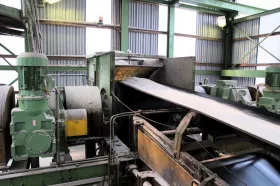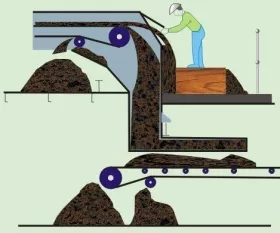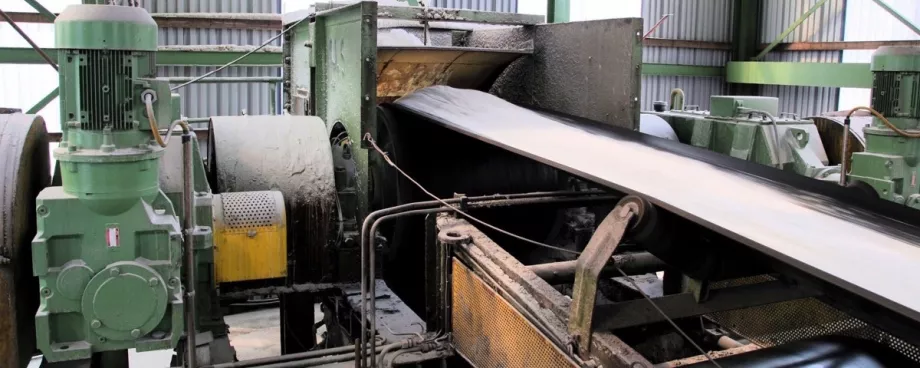
However, further information and clarification is quite valid considering that the transfer of material from one belt conveyor to another is one of the most crucial design characteristics, and yet still remains one of the aspects least considered in the initial design of a system. In most instances the transfer of material between belts is the defining parameter in the selection of a suitable belt profile. It is therefore worthwhile to define and discuss some of the important parameters in chute design. Simple formulae and rules are presented that are useful in the design of efficient transfer points. Despite the many packages that allow for the simulation of the flow by computerised methods, it is of importance to be familiar with the basic formulae from which these simulations are derived in order to understand the more complex processes, many of which have been presented at Beltcon conferences in recent years. The basic formulae, to which younger engineers may not have been exposed, remain important particularly in instances where the extensive computing power required by chute design packages is not available.
1. Definition of a Chute
A chute is defined in the Oxford dictionary as “A sloping channel or slide for conveying things to a lower level”. This is a perfect definition of both a curved chute, where the chute body acts as the slide or of the sloping portion of the material in a Rock-Box type chute where the material is the slide.
2. The Problems (Challenges) with Chutes
The following list is drawn from a paper presented at the Chute Design Conference organised by the Bionic Institute in 1992. The problems as well as the solutions thereto remain essentially the same even with the passage of time. What has happened is that computer ability has increased, which allows for a quicker resolution to the problems (provided that this is correctly applied).
- Spillage
- Load zone turbulence
- Load centring
- Poor skirt board seal
- Impact idler maintenance
- Inadequate skirt board length
- Dust control
- Material degradation
- Belt tracking
- Poor provision for clean up
- Chute wear
- Inadequate provision for belt cleaning equipment
- Inadequate inspection access
- Belt damage from large lumps
- Belt wear and abuse
- Material build up – plugging
- Noise
- Structural support of chute and skirts
- Lack of attention to detail design
- Loading onto transition area
- Corrosion
- Unknown material characteristics
- Economic considerations
- Safety issues
- Housekeeping

Wilst many of the above are maintenance related issues there are many that can be grouped under one banner: Lack of attention to detail design.
3. The Critical Factors
There are some critical factors which are paramount in chute design. These are:
- Reduction of impact on the chute faces.
- Reduction of impact on downstream belt.
- Centralised loading onto the downstream belt.
A more complete set of design criteria that characterises an efficient chute is one that:
- is not prone to blockages.
- allows for the transfer of material with minimal wear to the chute surfaces,
- allows for the transfer of material with minimal wear to the downstream belt,
- results in minimum material degradation,
- results in minimum dust production,
- centralises the load onto the downstream belt, hence minimising belt wander, and
- results in minimum material segregation.
In order to achieve the above objectives, the designer should follow a logical design sequence as follows:
- Know and understand the properties of the material to be conveyed.
- Know and understand the nature and characteristics of the application.
- Plot the trajectory of the material.
- Design the hood (discharge collector) and define conditions for minimum wear in the chute, or, in the event that a rock box is selected, design the rock box so as to collect and transfer material in an appropriate channel.
- Design the Spoon (discharge distributor) and define conditions for minimum wear in the chute and on the downstream belt.
The process is iterative and may be affected by factors such as limitations on head room, variations in lump size or in fact, the type of material. Whilst often the designer is forced to compromise on certain design criteria (e.g. chute and belt wear and material degradation) the requirement to prevent blockages and reduce the possibility of spillage must never be compromised.




















